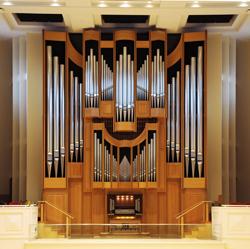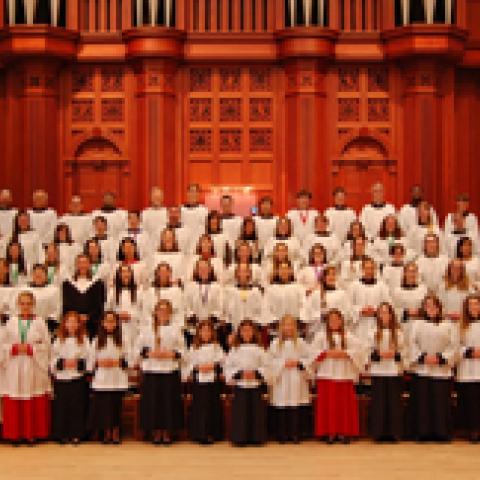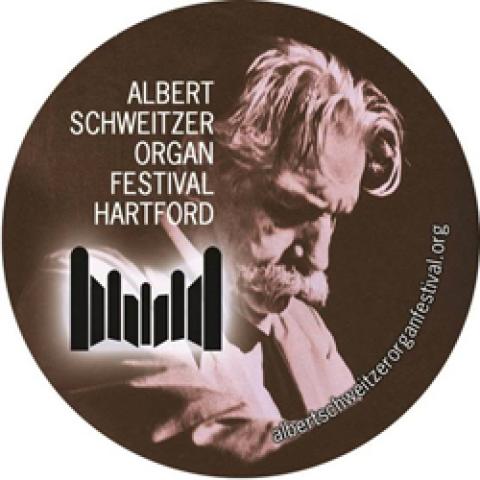James F. Mellichamp
Billed as “An Organ at the Crossroads,” the fall organ conference at Indiana University, held September 15–18, drew a large group of participants from across the country. Part traditional conference and part showcase for the recently completed installation of Fisk Opus 91, the event centered around topics common to the French organ of the 17th through early 19th centuries.
One could hardly have selected a better conference theme, since Bloomington, Indiana, stands at the crossroads of the United States; Fisk Opus 91 occupies an important location at the crossroads of the IU campus; and our present time certainly represents a crossroads in the historical development of the organ. So those in attendance found themselves reaching back into the past, with inspiration from a grand instrument and from present musical scholarship, to better understand a magnificent period of the organ.
Sunday, September 15
The conference began on Sunday evening with the inaugural recital of Fisk Opus 91 and featured faculty from the Jacobs School of Music (JSoM). Following a welcome by Dean Gwyn Richards, a lively performance of the Buxtehude Praeludium in C Major (BuxWV 137) was given by Bruce Neswick. Marilyn Keiser can always be counted on to offer something unique, and she lived up to that reputation with the “Theme and Variations” from Rheinberger’s Suite, op. 149. Scored for violin, cello, and organ, this was a magical moment in a performance marked with elegance and sincere musicianship.
JSoM organ curator David Kazimir followed with an exciting reading of the Pièce d’Orgue (BWV 572) by J. S. Bach. One could hardly have chosen anything from the Bach oeuvre more Gallic and perfectly suited for the instrument.
Department chair and professor Janette Fishell won the prize for the evening’s most-unexpected repertoire. Paying tribute to the fascination held by French composers for pastoral music (including storm scenes)—and recollecting a hair-raising storm on the return leg of a visit to see and hear Opus 91 in California—she pushed the organ nearly to its limits with the Scéne pastorale of Lefébure-Wely.
Next Charles Webb, dean emeritus of the JSoM and a long-time organist in Bloomington, offered the well-known Dubois “Toccata” from the Douze pièces, a staple in the organ repertoire.
Professor Christopher Young provided a lovely moment of respite with his performance of the Petit Offertoire by César Franck. This was followed with the Prelude and Fugue in B Major, op. 99, no. 2, by Saint-Saëns.
The evening was brought to a grand conclusion by Adjunct Professor Colin Andrews, playing Messiaen’s Transports de joie.
Monday, September 16
The morning began with a panel discussion about the history of Fisk Opus 91 and included remarks by Fisk employees Steven Dieck, president; Stephen Paul Kowalyshyn, senior voicer; and Michael Kraft, senior reed voicer and director of special projects.
The history of this particular instrument began in 1980 and reads like a novel. Information was provided about the project’s commission from Jacques Littlefield for his residence in Portola Valley, California. A European trip with Fisk personnel in 1984 further informed the instrument’s final design. Completed in 1987, the organ is a fully developed three-manual instrument with strong 18th-century French tendencies tempered by some 19th-century traits.
In an innovative collaboration, the organ was acquired by Indiana University through a gift arrangement and subsequently installed earlier this year in Alumni Hall, a large Collegiate Gothic space in the Indiana Memorial Union. Minor adjustments were made to the instrument’s voicing. Dieck, quoting the late Charles Fisk, suggested that “you never really finish an organ, you just abandon it.” As completed, the instrument looks, feels, and sounds as if had always been at home here.
Monday midmorning brought the first of three lecture and masterclass sessions with Jesse Eschbach, professor of music at the University North Texas, and a veritable encyclopedia of all things associated with French repertoire for the organ. Performances of relevant pieces were admirably rendered by JSoM organ students.
Eschbach began his presentations by establishing three broad categories within the period of the French Classic: Preclassical France (1585–1661); High Classic (1661–1715); and Post Classic (1725–1860). His remarks were illuminated by printed material that touched on organ specifications, historical perspective, composer biographies, and performance practice.
Musicians often struggle with grasping the enormous amount of information required to pierce the cloud obscuring this remarkable literature. Eschbach urged attendees to “put on 17th-century ears,” which involves being sensitive to the effect that music of these periods had upon listeners of the time. He pointed out the importance of understanding the music from an analytical standpoint, since knowledge of the contrapuntal fabric is key to a convincing performance. He also described the influence that Viennese composers and opera play in understanding music from the Post Classic era.
A creative concert on Monday afternoon featuring members of the JSoM’s Sacred Music Practicum was surely a conference highlight. Associate Professor Bruce Neswick—noted church musician, concert artist, and composer—has the enviable task of directing this group. The concert provided various readings, interspersed with alternatim performances of hymns, chorales, and chant in settings by Ralph Vaughan Williams, Samuel Scheidt, Nicolas de Grigny, J. S. Bach, and Jehan Alain. It offered a wonderful opportunity to retreat from the busy world around; to respond to meaningful texts, both sung and spoken; and to revel in the sounds of a fine instrument.
James David Christie, distinguished artist and professor at Oberlin, next led a masterclass on French Romantic organ music performed by JSoM students: Pastorale, op. 19, of César Franck; “Final” from Symphonie gothique, op. 70, of Charles-Marie Widor; and “Naïades” from the Fantasy Pieces, op. 55, of Louis Vierne. Christie offered insightful information about these pieces including a discussion of tempo, articulation, and—in the case of the Widor—the importance of conveying the musical architecture.
As if that were not enough for one day, the afternoon concluded with “A Quick Trip through Time—A Recital of Improvised Music in the French Manner.” William Porter, long acclaimed as a gifted master of improvisation, kept everyone spellbound. With themes provided by Bruce Neswick, Porter provided a five-movement suite in 18th-century style based upon “Splendor paternae gloriae,” a three-movement work in 19th-century fashion, and a magnificent 20th-century style improvisation in three movements (Grand Choeur, Triptych, and Final). Listening to Porter, whose playing is so poised, is a rare treat. He knows the concepts inside-out and couples all of that knowledge with a level of musical expression that is truly rare.
Monday evening ended with a lovely dinner in the solarium adjacent to Alumni Hall. The inaugural performance was then repeated for those unable to attend the preceding evening.
Tuesday, September 17
This day brought the second and third installments of Jesse Eschbach’s lectures. Morning and afternoon sessions were held in Alumni Hall (Fisk Opus 91) and in Auer Hall (Fisk Opus 135) respectively. Eschbach touched on the rise of public performances (Concerts spirituels), the decline of contrapuntal music, and important developments that distinguished the earlier French Classic organs from those of the late-18th/early-19th centuries. Most importantly, he noted that it would be a mistake to perform French Classic repertoire, which has its roots in improvised music, the same way each time.
Tuesday morning also gave JSoM students a chance to understand how to improvise in historical styles. William Porter urged the students to “think as a composer” and “know the language” by reliance upon patterns and conventions of the genre. Also important is to “stay cool when the unexpected happens.” His approach used small building blocks of musical material that made the task of improvisation seem less daunting.
Following a carillon concert in the music courtyard and a reception for JSoM alumni at Linden House, a sumptuous banquet was enjoyed in the Tudor Room of the Indiana Memorial Union.
Tuesday evening, James David Christie closed the conference with a recital on Fisk Opus 91. He began the program with the Marchand “Dialogue” from the Third Organ Book, in a performance distinguished by great rhythmic vitality and panache.
Next followed an interesting group of pieces employing variations over ground basses—starting with a Ciacona by the seldom-heard Italian composer Storace. This was followed by the lyrical Ciacona in F Minor of Pachelbel and by the Buxtehude Passacaglia in D Minor. All of these served to show the multi-faceted character of the Fisk to full advantage.
The first half concluded with a potpourri of less well-known compositions by J. S. Bach—including a Magnificat Fugue (BWV 733), four charming settings from the Neumeister Chorales, and the monumental “Contrapunctus XI” from the Kunst der Fuge (BWV 1080).
The second half of the concert featured the Antonin Barié Symphony in B Minor, op. 5 (1911). Barié was another in the long line of gifted French organists who were blind; he studied with Louis Vierne, whose influence is readily apparent in the structure and tonal language of Barié’s work. Christie was obviously in his element as he introduced this remarkable composition to the audience in a breathtaking performance.
In tribute to the late Marie-Claire Alain, with whom he had studied, Christie ended the evening with the Élégie he originally composed in 2006 as an homage to his teachers, Sister M. Dolorette Recla and Jean Langlais.
Wednesday, September 18
A brief codetta on Wednesday morning offered individuals an opportunity to have open console time or participate in mini-masterclasses with JSoM faculty on Opus 91 (Alumni Hall) and Opus 135 (Auer Hall).
The organ department at Indiana University can be justifiably proud of providing this opportunity to come together at the crossroads of America—offering up a wonderful interaction of scholarship, musicianship, and organ craftsmanship.





